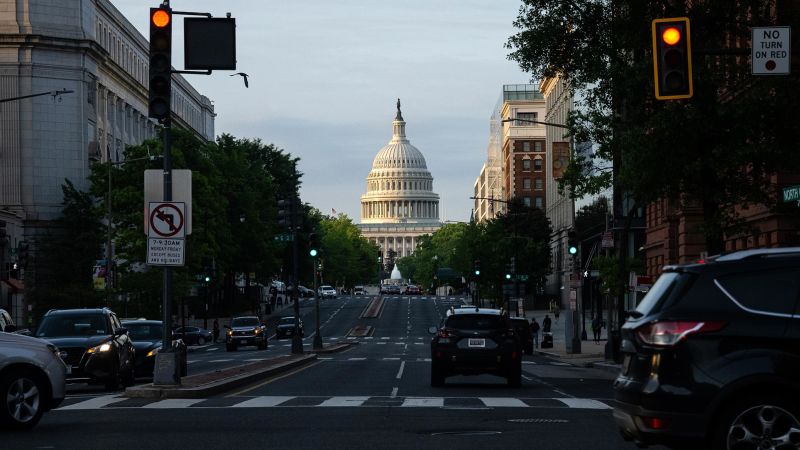The House Republicans are gradually fleshing out their extensive tax and spending cuts package, which is being publicly dubbed President Donald Trump’s “big, beautiful bill.” This legislative proposal aims to extend the provisions of the GOP’s 2017 Tax Cuts and Jobs Act while also fulfilling a number of promises made by Trump during his presidential campaign, such as eliminating taxation on tips.
To counterbalance the proposed reductions in taxes—which are projected to amount to several trillion dollars over the next decade—the House is eyeing at least $1.5 trillion in cuts to government expenditure. In addition to tax reforms, Republicans are signaling their intention to deliver on other significant Trump pledges, including substantial investments focused on staffing at the Southern US border. This plan also encompasses initiatives intended to deter immigration to the United States and the introduction of an expansive missile defense shield. Additionally, the package includes various longstanding policy objectives of the GOP, which involve overhauling the country’s archaic air traffic control system, creating new fees applicable to electric vehicles, and revising the framework surrounding federal student loans.
The development of this comprehensive legislation is being tackled by eleven different House committees, each responsible for different segments of the overall bill. Speaker Mike Johnson has set an ambitious timeline, hoping for a congressional vote on this significant legislation before Memorial Day. However, the Senate has its ideas on how the package should be structured and tight regulations regarding what can be included, especially since the House Republicans plan to utilize the budget reconciliation process to circumvent the necessity of Democratic support.
As House committees begin the initial markup of their respective sections, contentious discussions surrounding potentially severe cuts to essential services— such as Medicaid and food assistance—along with tax cuts will take place in the following week. This process will shed light on the finer details of the Republicans’ proposed legislative package.
The Education and Workforce Committee proposes significant changes to federal student borrowing and basically aims to find around $330 billion in savings through limiting federal involvement in student loans. Notably, the revised plan caps annual federal aid for students to the median college cost and eliminates deferments based on economic hardship or unemployment. Furthermore, the proposal also ends subsidized loans for undergraduate students while amending the borrowing limits to necessitate that students deplete their unsubsidized loan options before their parents can take loans through the Parent PLUS program.
The proposed measure also suggests the cessation of all income-contingent repayment plans, replacing them with standard repayment options that rely on the borrower’s financial standing. In terms of the Pell Grant program, the committee looks to impose stricter requirements on full-time enrollment while simultaneously expanding eligibility for students enrolled in specific short-term workforce initiatives.
Turning to immigration policies, the House Judiciary Committee plans to implement higher application fees for asylum seekers, alongside a proposal to construct new immigration detention facilities. This includes provisions for hiring 10,000 more Immigration and Customs Enforcement (ICE) officers, facilitating up to 1 million deportations annually. The funding is vastly substantial, amounting to around $45 billion earmarked for border security, focusing on enhancing barrier systems and boosting staffing within the border control agencies.
In terms of electric and hybrid vehicle revenues, the House Transportation Committee has set forth financial stipulations requiring electric vehicles to pay an annual fee of $250. This money would be allocated to the Highway Trust Fund, allowing for significant funds to be procured for infrastructure.
Regarding defense spending, the House Armed Services Committee advocates an additional $150 billion to bolster defense capabilities. This includes nearly $25 billion for the development of advanced missile defense systems and distinct allocations aimed at enhancing service members’ quality of life.
As the legislative package continues to evolve with contributions from various House committees, its ultimate success hinges upon a blend of party unity and negotiation with differing viewpoints from across Congress, notably the Senate, where the avenue to pass the package without bipartisan support introduces another layer of complexity. With the ambition for a finalized bill by Memorial Day, the political landscape remains as dynamic as ever. As discussions unfold, the implications of these proposed changes will undoubtedly ripple through various sectors and populations, prompting analysis and debate as the Republican-led House forges ahead with its comprehensive reform efforts.



